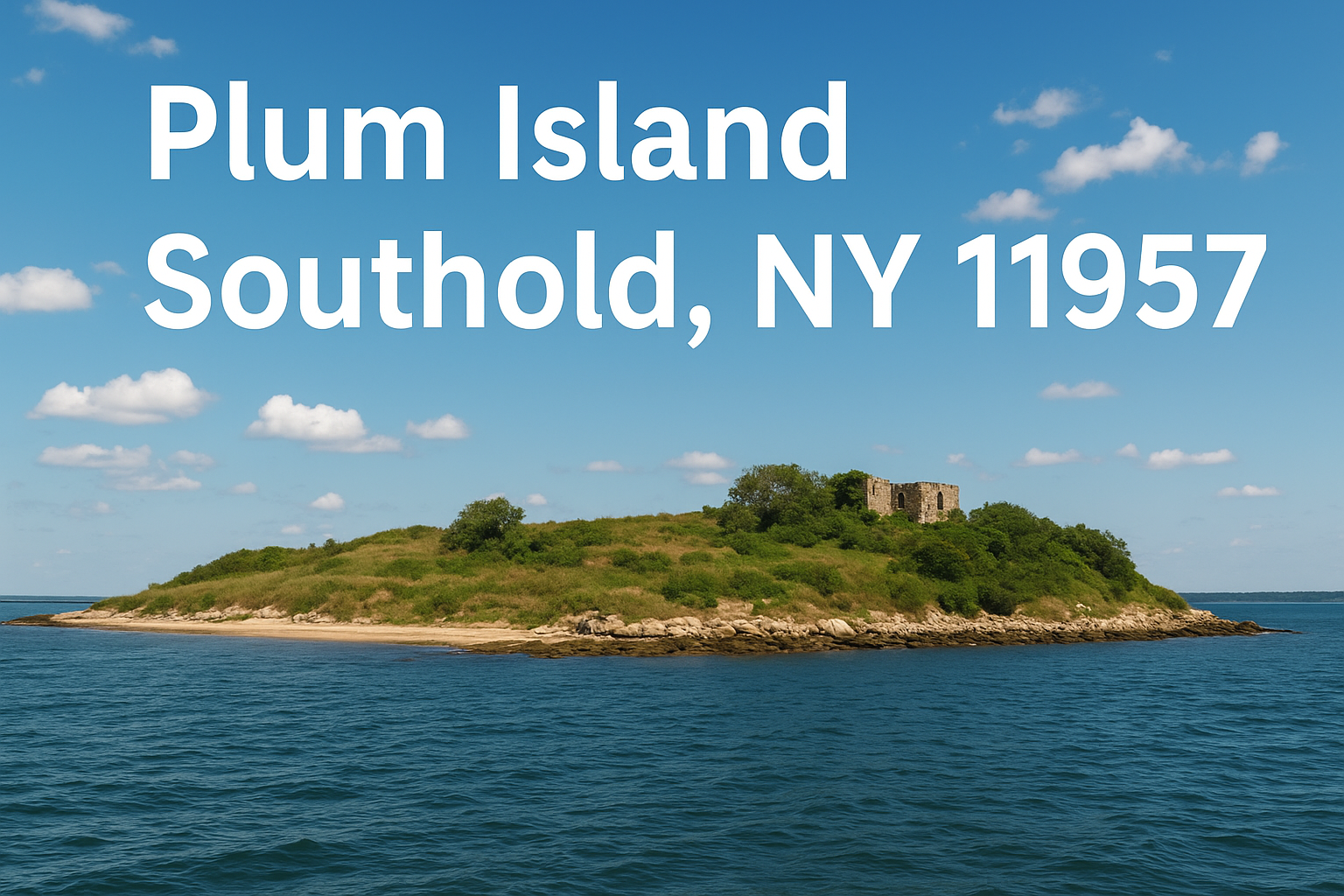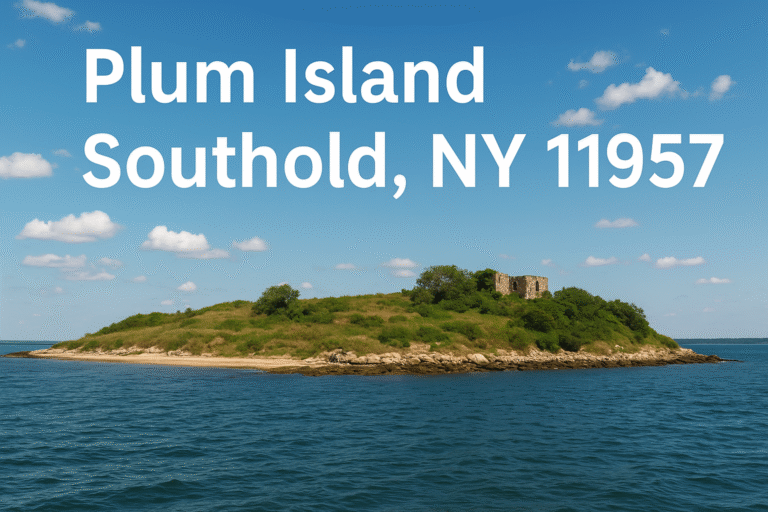
Tucked away off the northeastern tip of Long Island lies one of the most fascinating and mysterious places in New York — Plum Island Southold, NY 11957. Known for its restricted access, scientific research, and captivating natural landscapes, Plum Island has intrigued historians, scientists, and travelers for decades. Though small in size, this island has played a major role in the history of animal disease research and environmental preservation in the United States. Today, its future stands at a crossroads — will it remain a scientific hub, or become a sanctuary for wildlife and conservation?
This article takes you deep into the history, ecology, and allure of Plum Island, exploring its unique past, its role in modern science, and the growing movement to preserve it for generations to come.
The Geographic Charm of Plum Island
Plum Island Southold, NY 11957 sits just a short boat ride away from the North Fork of Long Island, near the town of Southold. Covering roughly 840 acres, the island features rolling grasslands, rocky beaches, and coastal bluffs overlooking the Long Island Sound. Its strategic location between Orient Point and Fishers Island has made it a significant spot in both maritime navigation and defense history.
From the shores of Southold or Greenport, on a clear day, visitors can see the island’s outline in the distance. While the public cannot access the island itself due to its federal restrictions, the surrounding waters and nearby coastal areas provide breathtaking views. It’s no wonder Plum Island continues to captivate locals and visitors who are drawn to its untouched beauty and air of mystery.
A Fascinating History That Shaped the Island
The story of Plum Island Southold, NY 11957 stretches back hundreds of years. Before European settlement, Native American tribes used the island for seasonal hunting and fishing. Later, during the colonial era, it became a part of early maritime trade routes connecting Long Island to Connecticut and Rhode Island.
In the late 19th century, the U.S. Army recognized Plum Island’s strategic importance. Fort Terry was established there during the Spanish–American War as part of America’s coastal defense system. The remains of this fort still stand today, serving as a reminder of the island’s military heritage.
But it was in 1954 that Plum Island’s modern identity took shape. The federal government established the Plum Island Animal Disease Center (PIADC), a high-security laboratory dedicated to studying foreign animal diseases. The facility’s mission was to prevent outbreaks that could devastate U.S. livestock industries, and over the decades, it became a cornerstone of American agricultural defense.
The Plum Island Animal Disease Center: Science and Secrecy
Perhaps the most well-known aspect of Plum Island Southold, NY 11957 is the Plum Island Animal Disease Center. Operated under the U.S. Department of Agriculture and later the Department of Homeland Security, the center has long been the subject of both scientific acclaim and public speculation.
Researchers at the facility have made groundbreaking advances in understanding and preventing animal diseases such as foot-and-mouth disease, swine fever, and African horse sickness. These efforts have helped safeguard America’s farms and food supply from devastating epidemics.
However, because of the island’s restricted access and the sensitive nature of its work, Plum Island has also inspired numerous myths and conspiracy theories. Some have speculated about secret experiments or mysterious origins of certain diseases, though these claims have never been substantiated. What remains undeniable is the island’s critical role in veterinary science and biosecurity over the past half-century.
Environmental Treasures of Plum Island
Beyond its laboratories and history, Plum Island Southold, NY 11957 is a hidden ecological gem. The island’s isolation has allowed nature to thrive largely undisturbed. It hosts over 200 species of birds, including endangered terns and migratory species that rely on its habitats for nesting. Harbor seals often rest along its rocky shores in the colder months, creating a scene that feels almost untouched by human development.
The interior of the island features meadows, wetlands, and forests that provide essential habitats for local wildlife. Botanists have identified dozens of native plant species, some of which are rare or threatened elsewhere on Long Island. Environmentalists view Plum Island as a natural treasure that must be protected from commercial development or industrial use.
The Fight for Preservation
As the federal government plans to relocate the Plum Island Animal Disease Center to a new facility in Kansas, the fate of Plum Island Southold, NY 11957 has become a topic of passionate debate. Initially, there were plans to sell the island to the highest bidder, potentially opening it up for private development. However, strong opposition from local residents, environmental organizations, and political leaders led to renewed efforts to preserve it instead.
Groups like Save the Sound and Preserve Plum Island Coalition have been instrumental in raising awareness about the island’s ecological and historical importance. Many advocates are calling for Plum Island to be turned into a national wildlife refuge, ensuring its protection for future generations. This vision aligns with the island’s unique blend of natural habitats, scenic beauty, and cultural heritage.
Visiting the Surrounding Area of Southold, NY 11957
While Plum Island Southold, NY 11957 itself remains off-limits, visitors can enjoy the surrounding region’s charm and attractions. The town of Southold is known for its relaxed coastal lifestyle, vineyards, historic landmarks, and farm-to-table dining experiences. Nearby Greenport Village offers a lively marina, boutique shops, and fresh seafood restaurants overlooking the bay.
Ferry tours and private charters occasionally pass by Plum Island, giving passengers a close-up view of its rugged shoreline and historic structures. For those interested in history, the Southold Historical Museum provides insights into the area’s maritime and agricultural past, offering context to Plum Island’s role in the broader story of Long Island’s North Fork.
The Future of Plum Island
The future of Plum Island Southold, NY 11957 remains uncertain but hopeful. Federal lawmakers and conservation groups continue to discuss ways to ensure that this unique landscape remains protected from development. Turning it into a national wildlife refuge would allow researchers, educators, and environmentalists to continue studying its ecosystems while opening opportunities for controlled eco-tourism in the future.
Plum Island stands as a symbol of the balance between scientific progress and environmental preservation. Its history of research and resilience mirrors America’s ongoing efforts to protect both public health and natural heritage.
Read also: Kotora Melnkalne: The Timeless Heart of Montenegro’s Adriatic Charm
Conclusion
In the quiet waters off Southold lies a place few have visited but many have dreamed about — Plum Island Southold, NY 11957. With its blend of history, science, and natural beauty, Plum Island captures the imagination like few other places can. From its days as a military fort to its pivotal role in animal disease research, and now its potential as a wildlife refuge, the island represents a fascinating chapter in New York’s coastal legacy.
As conversations continue about its future, one thing is clear: Plum Island is far more than a piece of land. It is a living story — of discovery, mystery, and the enduring connection between humanity and nature.
For those gazing across the water from Southold or Greenport, the distant silhouette of Plum Island serves as a reminder that even the most hidden places can hold the deepest significance.



